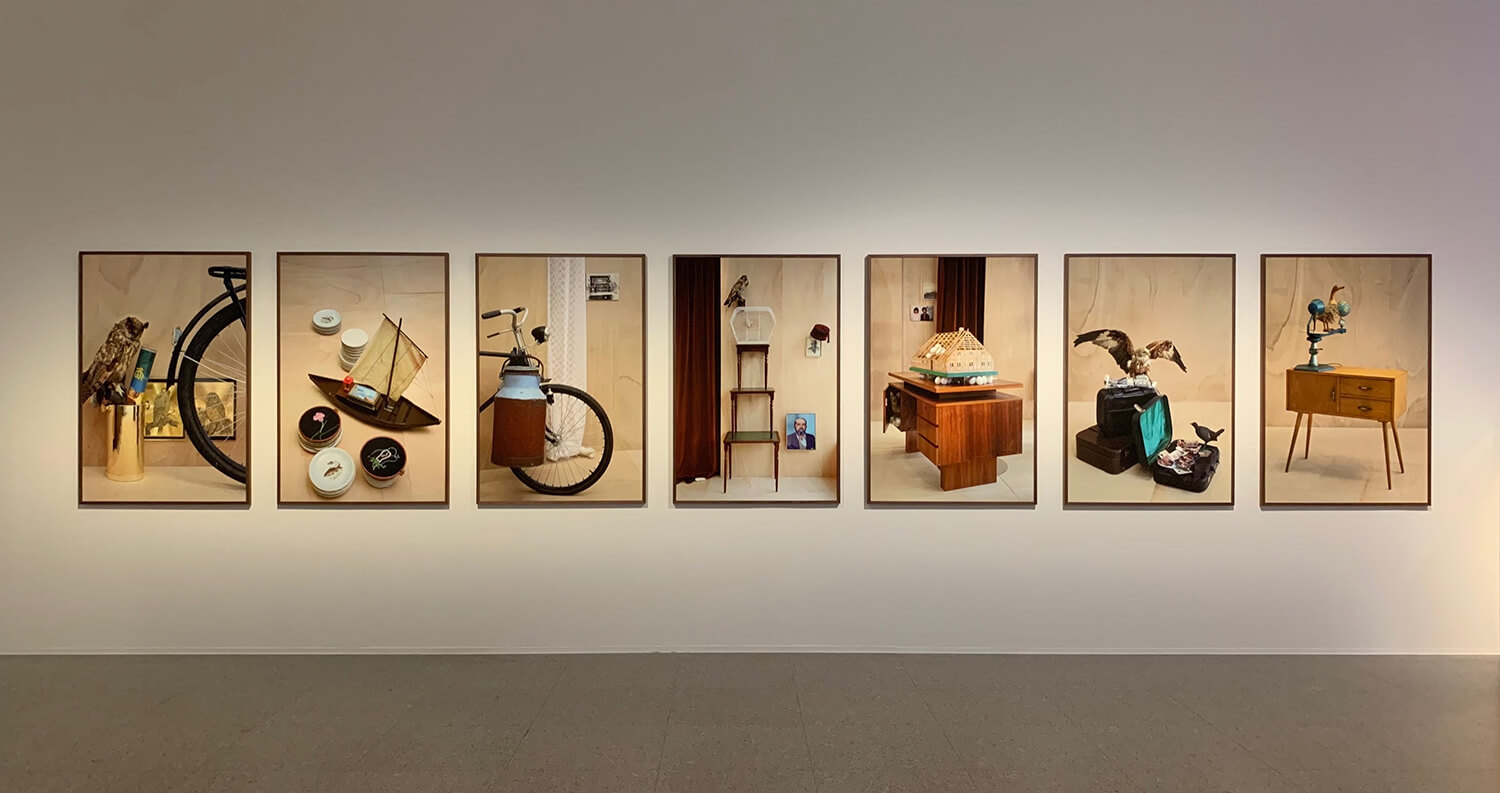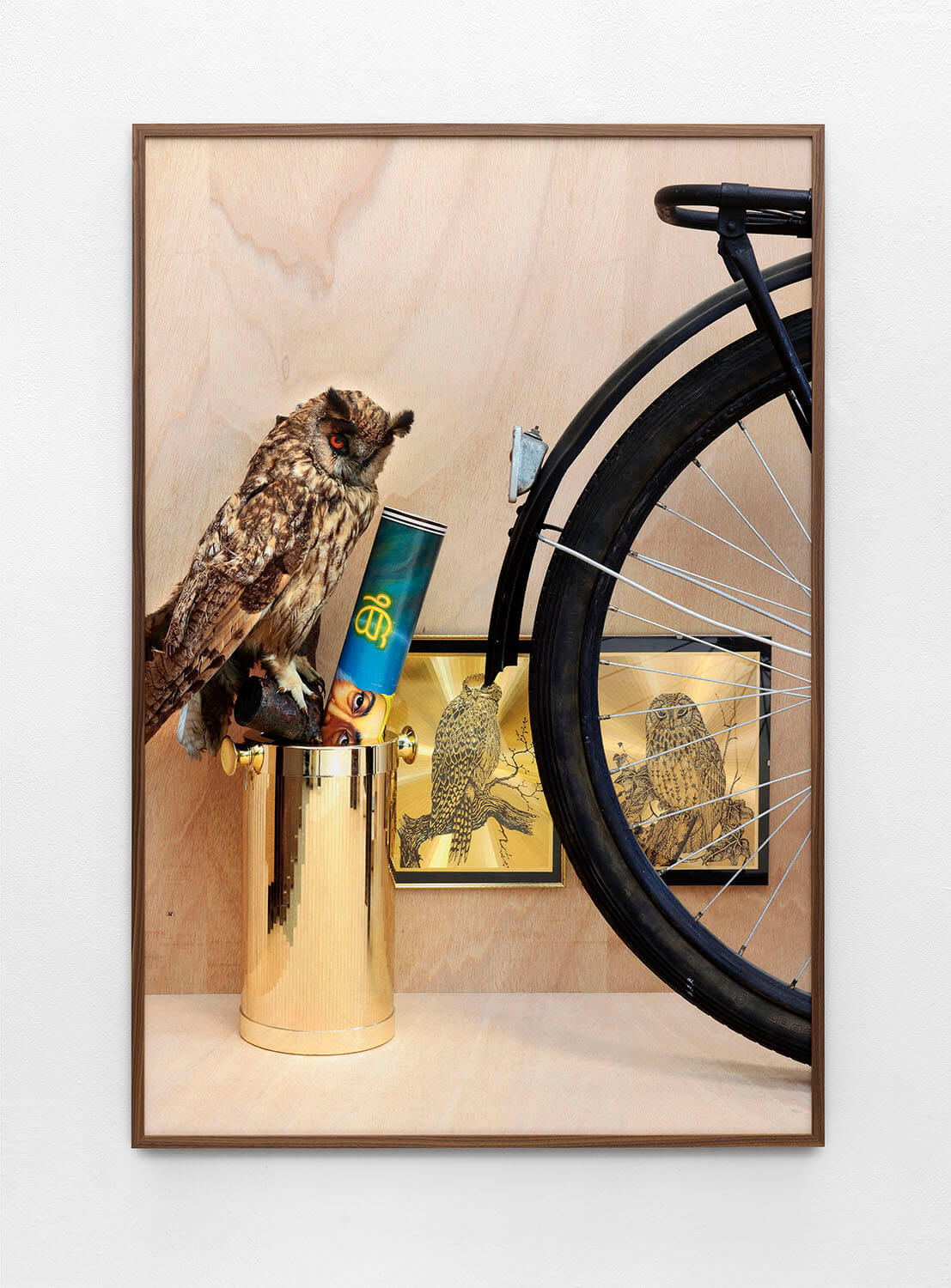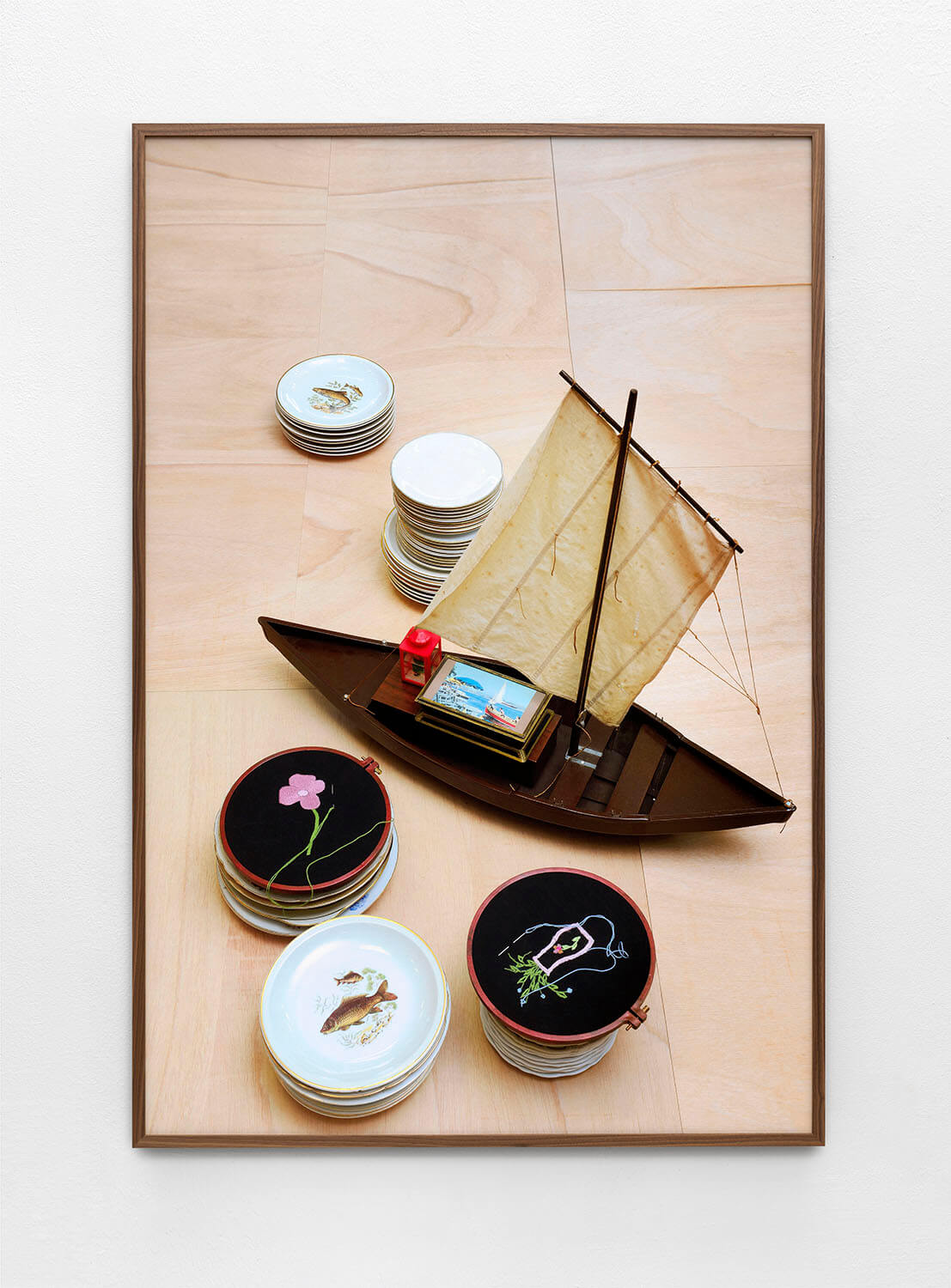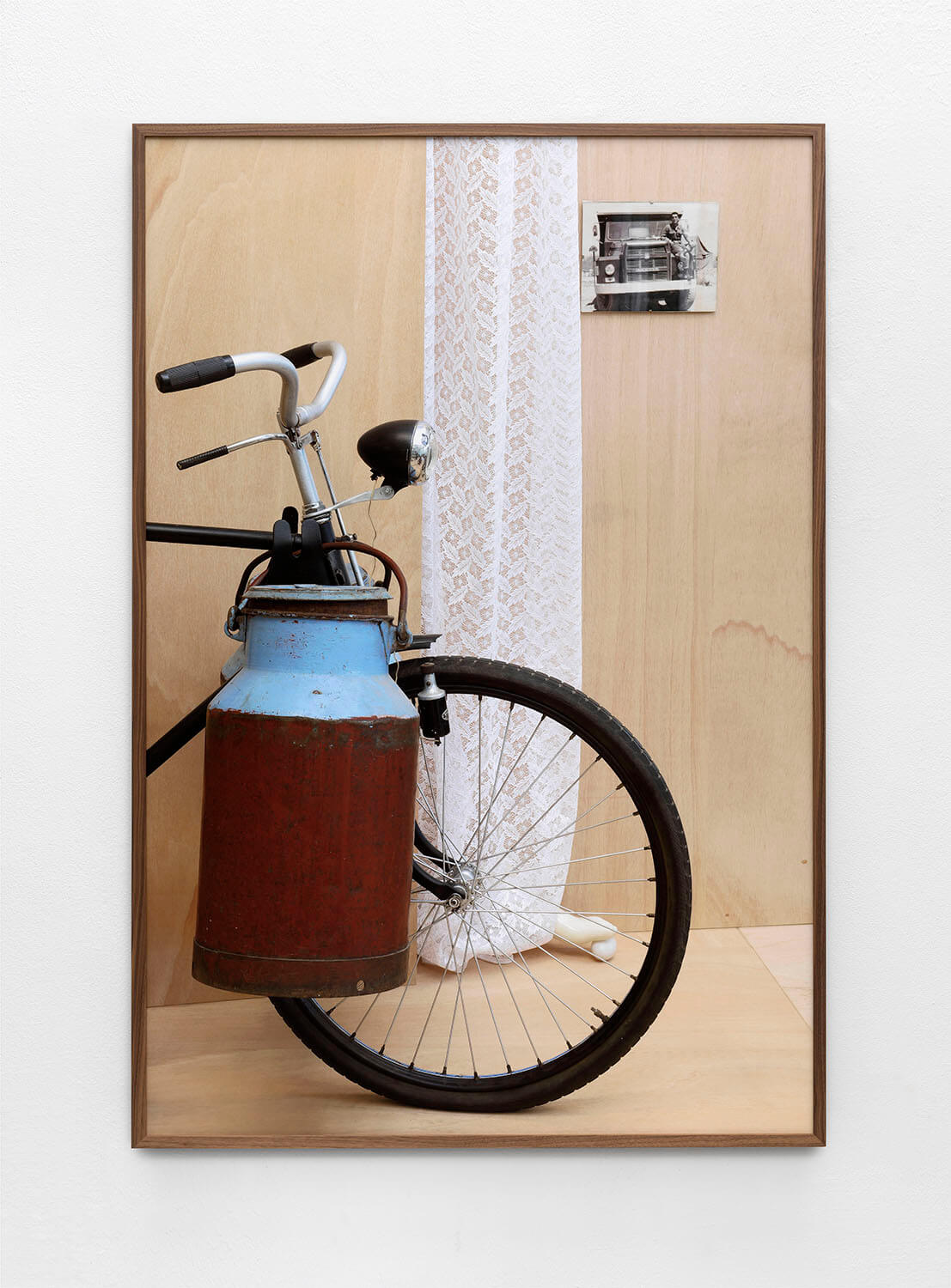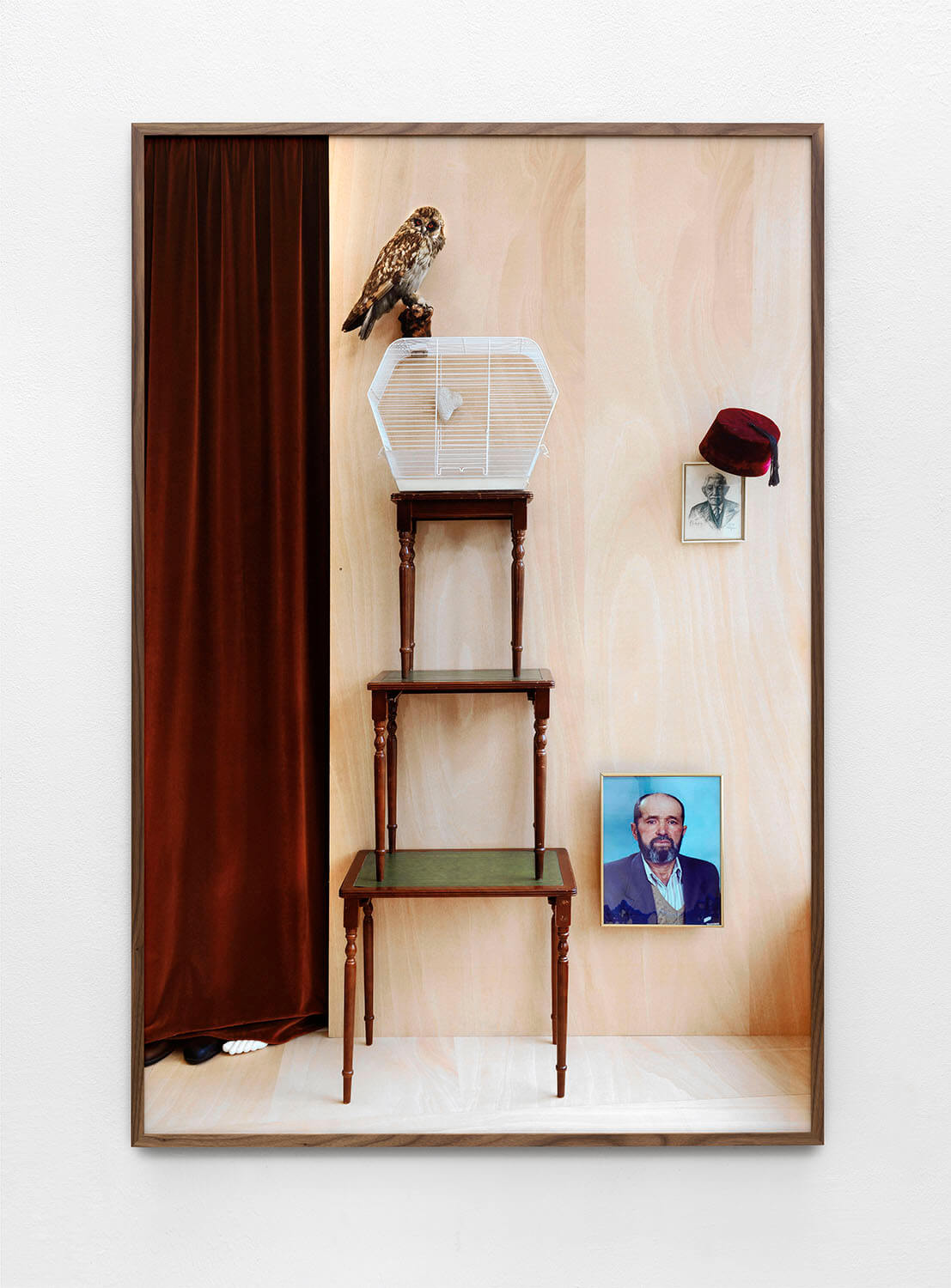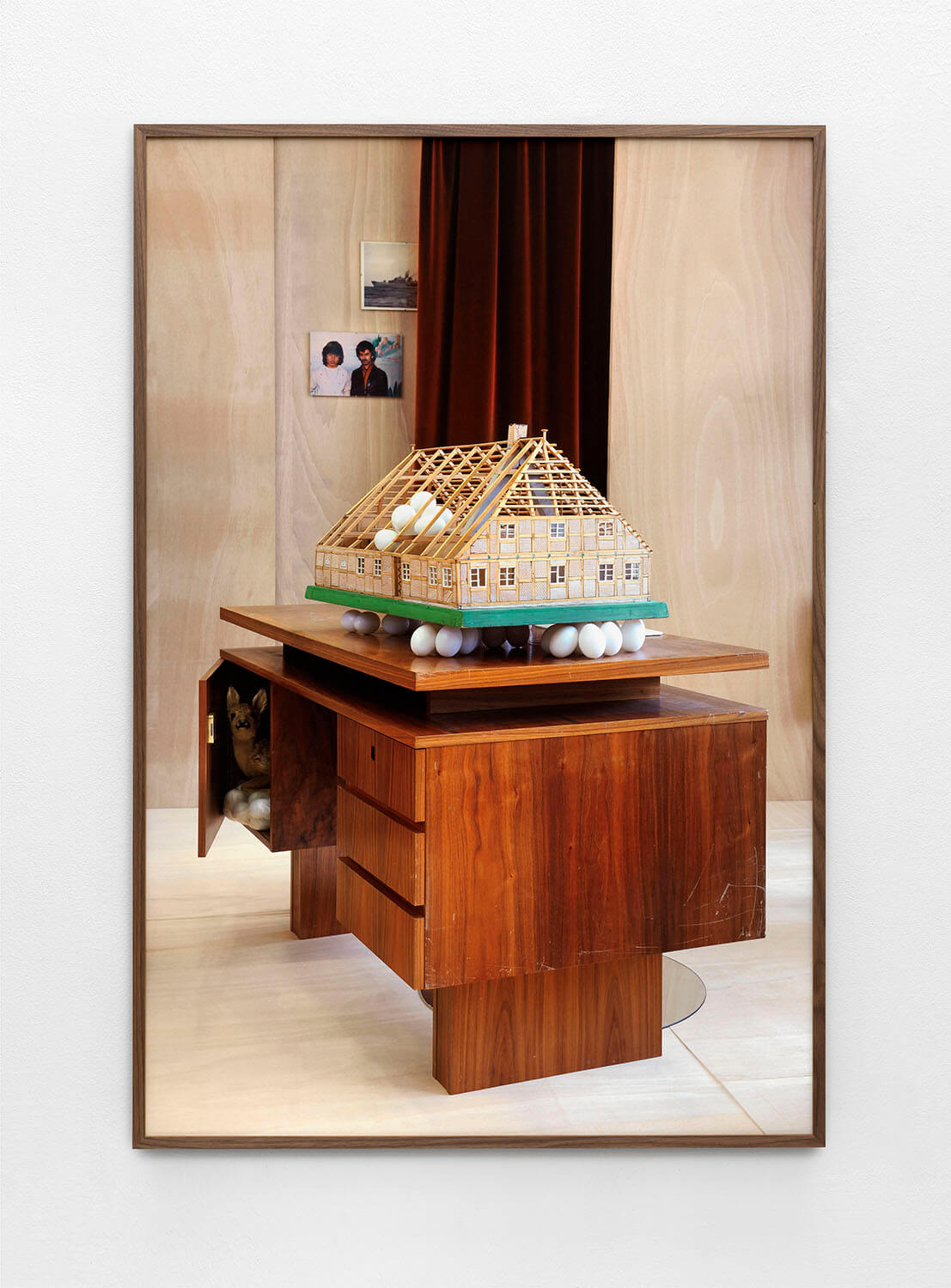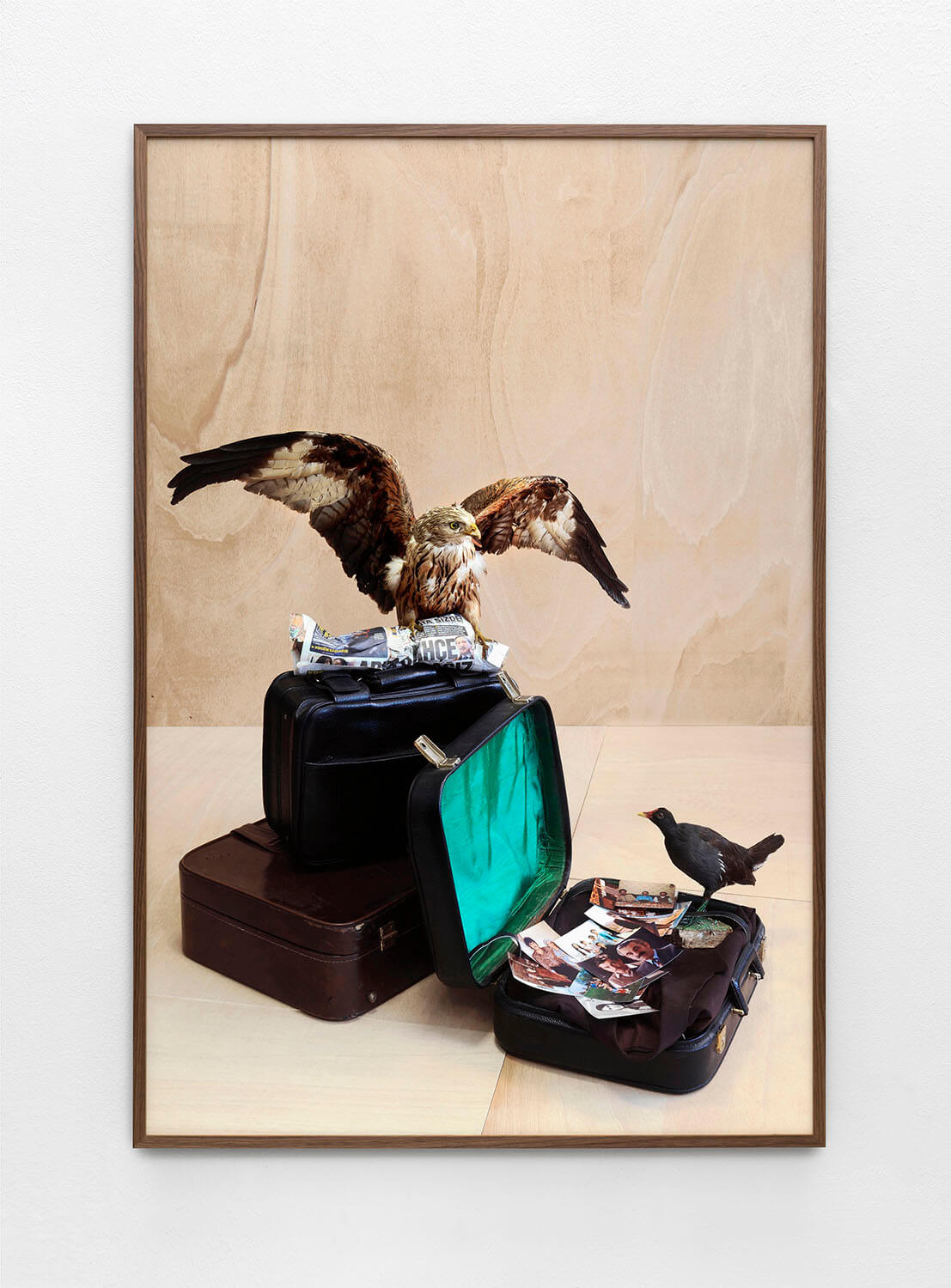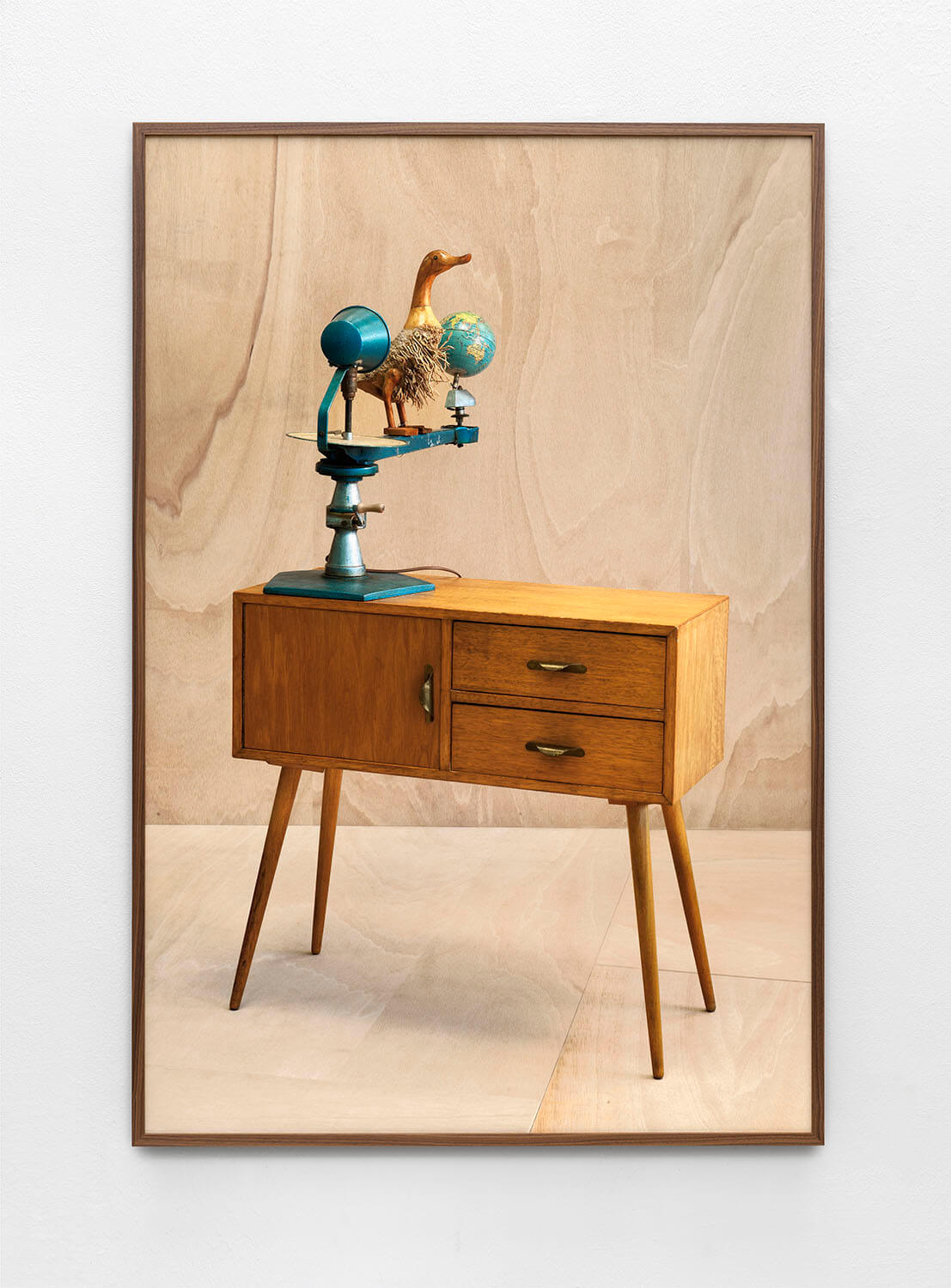2010, Photo Series
Archival Pigmentprint on Alu-Dibond, Hahnemühle Photo Rag Ultra Smooth 305 gr., Giclée Druck
| / |
In a bargain department store named Sammelsurium, situated in an abandoned passageway with second-hand furniture and accessories, Esra Ersen realized her installation Sammelsurium. The project was created in cooperation with the Museum Elbinsel Wilhelmsburg and was the attempt to widen and to actualize its existing collection. The Museum – a typical Heimatmuseum, founded in 1907 to preserve goods and traditions from the pre-industrial history of these former rural islands close to the harbour of Hamburg. It was foreseeable that the changes would be radical. Nearly 100 years later the neighboorhood has developed to a poor working-class district that shows the highest rate of ethnic diversity in Hamburg, whereas the Heimat-Museum is still dedicated to its programm.
Its lovingly presented everyday objects from the pre-industrial era have occupied Esra Ersen for a long time and led to an almost unsolvable task: she seeks to borrow museum pieces and to rearrange them in combination with objects from Wilhelmsburg, which are made available to her by families with an immigration background, into an installation, whose form is still totally unknown even to herself – in other words, which only comes into being when the borrowed and collected items are assembled.
To collect the constituent parts of this unpredictable picture, Esra Ersen must first of all gain the trust of those from whom she requests the borrowed items for her installation. All those addressed show uncertainty and specticism at first. In the end, she is able to convince Museum Elbinsel Wilhelmsburg and various residents of the Elbe islands to contribute. In a wide corner of the bargain department store, with large shop windows towards the street, the imagery of objects finally grows in front of the eyes of the employees and customers. Many of them give Esra Ersen ideas and bring new borrowed items as possible contributing elements.
The result is a multi-layered and contradictory >> picture of the Heimat << a transcultural overall picture that overrides established concepts of the homeland and Heimat and the simplified notion that the homeland is where one was born. All of those who found something of themselves for their story in it could relate to it immediately, and at the same time, it generally remained intangible and unknown for >>local residents<< and >> non-natives.<<
